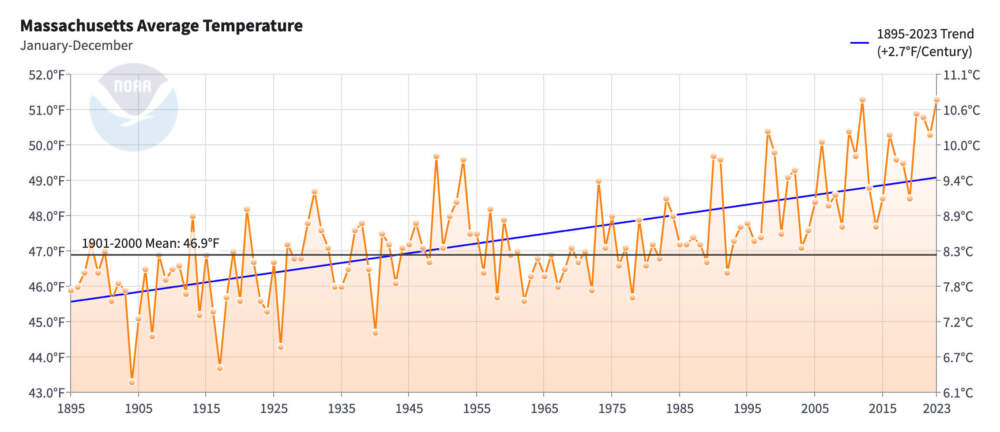Advertisement
2023 ties record for warmest year in Massachusetts

2023 was a warm year in Massachusetts. It tied 2012 for the hottest year on record in the state, according to data released Tuesday by the National Oceanic and Atmospheric Association (NOAA).
In the region, New Hampshire also had its warmest year, while Maine, Vermont, and Connecticut saw their second warmest years in the 129-year record. Nationwide, 24 states had years that ranked in the top-10 warmest.

More than a dozen cities across the Northeast also recorded their hottest year ever in 2023, including Worcester, Massachusetts, and Concord, New Hampshire. Boston experienced its third hottest year on record, with the average temperature 2 degrees above normal. Temperatures were near or above normal for almost every month in 2023, consistent with a decades-long stretch of above-normal temperatures in the region.
For the entire United States, the average annual temperature was 2.4°F above average, making the year the country's fifth warmest on record. Globally, 2023 was the hottest year on record.
Precipitation was also above average across much of the Northeast. Maine had its fifth wettest year, while Vermont and Connecticut each ranked sixth wettest, and Massachusetts had its seventh wettest year on record.

The report also identified 28 separate billion-dollar weather and climate disaster events during 2023 — the highest annual disaster count in the 44-year record. This is the 13th consecutive year where the U.S. experienced 10 or more billion-dollar disasters.
“It’s unambiguously clear that human-caused climate change is a major contributor to the record-breaking number of billion-dollar disasters the United States experienced last year, and the enormous human toll and costs they imposed on communities," said Rachel Cleetus, policy director for the Climate and Energy Program at the Union of Concerned Scientists, in a statement. "The effects of these disasters have reverberated throughout the economy."
Two of these disasters were in the Northeast: the February storm and cold snap, and the July floods that destroyed summer crops across Western Massachusetts. A powerful December storm that hit the East Coast from Florida to Maine also caused more than a billion dollars in damage through flooding, high winds and coastal erosion.
Extreme precipitation has increased by about 60% in the Northeast, according to the most recent National Climate Assessment. These sudden downpours, along with sea-level rise and stronger hurricanes, are expected to increase flood risk in the Northeast as the climate continues to warm.
